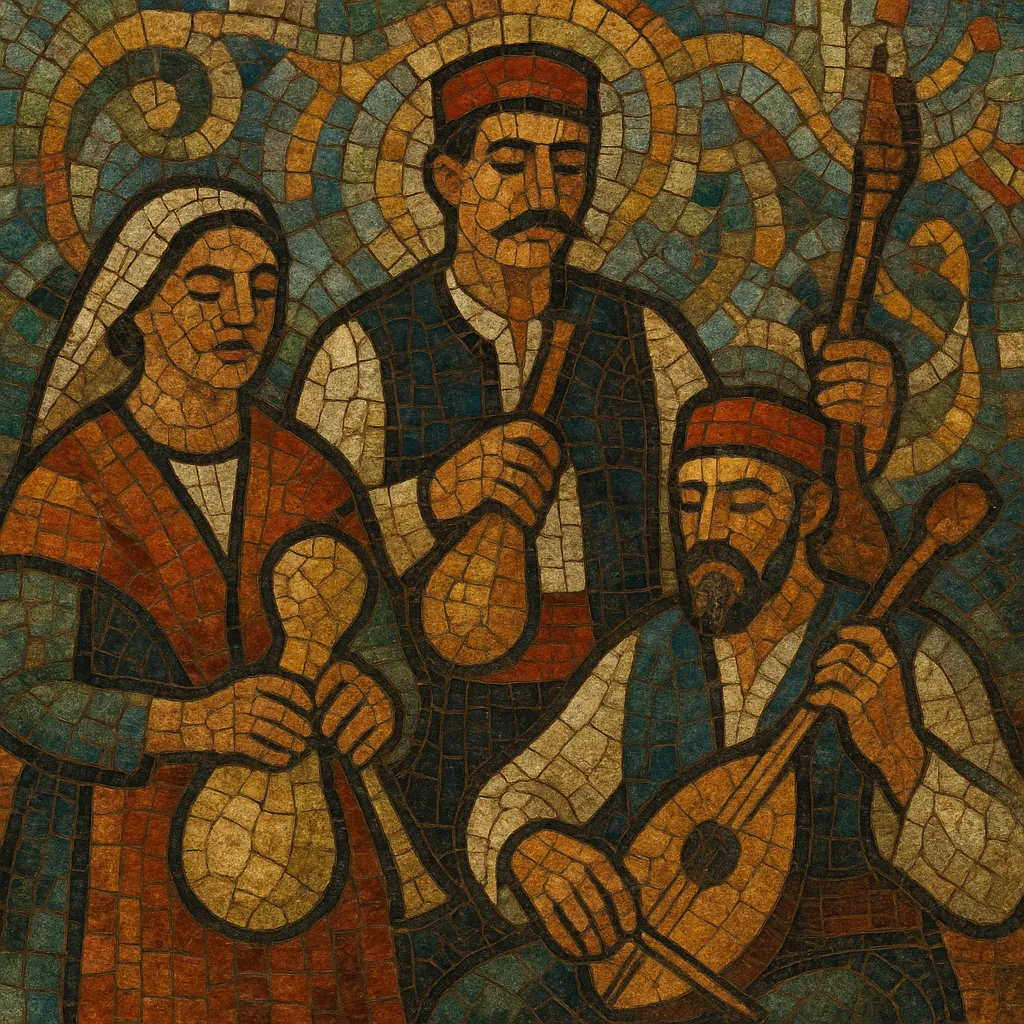Croatian folk music is the traditional music of Croatia’s diverse regions, shaped by centuries of life between the Adriatic coast, the Pannonian plains, and the Dinaric hinterland. It encompasses distinctive vocal practices (such as klapa, ojkanje, and ganga), regional dance tunes, and instrumental traditions featuring tamburica ensembles, bagpipes, sopile double-reeds, and the bowed gusle.
Coastal Dalmatia is known for close-harmony, largely a cappella klapa singing and Mediterranean colors; inland Slavonia favors lively tamburica bands, bećarac couplets, and kolo circle dances; Istria and Kvarner preserve archaic modal systems (the Istrian scale) and piercing sopile timbres; and the Dinaric highlands cultivate epic gusle recitation and powerful, microtonal polyphony. Together, these strands form a living heritage that is communal, lyrical, and dance-driven, and today it thrives in festivals, village celebrations, and contemporary folk/ethno-fusion projects.
Croatian folk music arose from local communal singing and dance practices that date back centuries, sustained by seasonal rites, weddings, and village feasts. Along the coast, Mediterranean contact introduced mandolins, guitars, and part-singing; in the Pannonian northeast, Central European dances and tamburica ensembles flourished under Habsburg influence. In the mountainous hinterland, epic singing to the gusle and raw multi-part shouting styles (ojkanje, ganga) preserved older vocal aesthetics and microtonal habits.
The 1800s saw the systematic collection and notation of South Slavic folk melodies by scholars such as Franjo Kuhač, coinciding with the Illyrian movement and growing national consciousness. Klapa singing took on its recognizable modern form in Dalmatia, while tamburica orchestras in Slavonia crystallized as community ensembles and symbols of regional identity.
After World War II, state ensembles professionalized the stage presentation of traditional music, most notably the LADO National Folk Dance Ensemble (founded 1949). Major festivals helped canonize repertoires: the Festival of Dalmatian Klapas in Omiš (from 1967) and Zlatne žice Slavonije in Požega for tamburica and bećarac. These platforms nurtured stylistic refinement while keeping village roots visible.
Key practices received UNESCO recognition: ojkanje (2010, urgent safeguarding), bećarac (2011), nijemo kolo of the Dalmatian hinterland (2011), and the traditional klapa singing of Dalmatia (2012). In 2018, Međimurska popevka was inscribed as well. This visibility spurred local transmission projects, school programs, and renewed pride across regions.
Since the 1990s, artists have blended traditional materials with folk-rock, world fusion, and ambient textures. Klapa groups collaborate with pop and jazz; tamburica bands experiment with modern production; and ethno groups recontextualize archaic scales and instruments for new audiences, keeping the tradition dynamic and intergenerational.
Decide whether your piece will reflect Dalmatian klapa (coastal close-harmony), Slavonian tamburica dance-songs (Pannonian plains), Istrian/Kvarner sopile and Istrian-scale idioms, or Dinaric epic/ganga/ojkanje vocal styles. Each has distinct timbre, mode, and ensemble norms.


